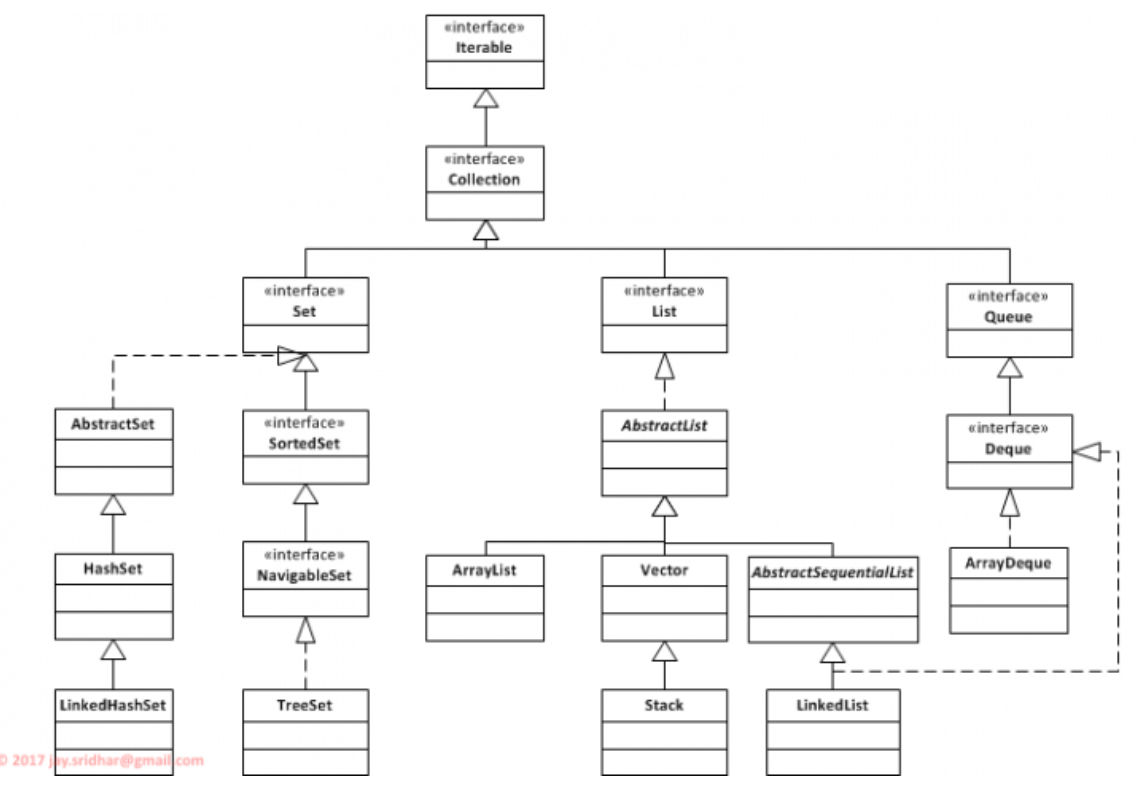
In a Stack, elements are pushed into one end of the stack, and elements pop out from the same end of that stack. Stack interface is implemented based on the usual LIFO data structure, i.e., Last In First Out. Stack – Most of the programmers are already familiar with Stacks and Queues (Queues discussed shortly).HashMap, HashTable, EnumMap, TreeMap, IdentityHashMap, WeakHashMap are some classes that can be implemented with the Map interface. Using the key, its corresponding value is returned. As evident from the fact, each key is unique in a Map, and hence there are no duplicate keys. Using the Map interface, we can group and store data elements in key-value pairs. Map – For those well acquainted with Python, Map Interface is very similar to the Dictionary data structure in Python Language.Vector, Stack, LinkedList, ArrayList, CopyOnWriteArrayList are some of the most commonly used classes which can be used with List interfaces. Some basic operations using Lists are – Searching for an element, Accessing an element from the list, etc. Like an Array, a List’s elements can be accessed based on its elements’ index or position. Moreover, unlike Sets, Lists can allow duplicate elements in their collection. List interfaces in Java are collections of ordered elements or objects. List – List implementation can be thought of as something similar to Python Lists, but they do have some differences.It is unordered, and many Java developers often forget this fact and thus face bugs in their code.ĮnumSet, HashSet, LinkedHashSet, TreeSet, ConcurrentSkipList Set etc are some classes which can be implemented on the Set interface. Sets do not return their elements in their collection in any predictable order. This Set Interface can be obtained from java. Set – The most important thing about Sets is that Sets should never contain any duplicate element or object.Let us look into detail some of the most common Collection interfaces: Based on the objects and their way of dealing with individual objects, we have the above-mentioned sub-interfaces. These objects might be similar or different from each other. These Collection interfaces help us in dealing with various objects by grouping them efficiently and performing operations accordingly.
#COLLECTIONS IN JAVA SOFTWARE#
It would return “True” if one or more elements exist in the collection, else it returns “False”.Ĭheck out upGrad’s Advanced Certification in DevOps In-Demand Software Development Skills isEmpty(): It checks whether the stated collection includes any element or not.size(): It gets the number of elements in the stated collection.clear(): It removes all elements from the stated collection.



Java collection framework helps manipulate the object’s collection. The prominent methods of the Collection interface in Java are add(), remove(),size(),clear(), and contains(). However, it doesn’t inherit the collection of the interface. The map interface is too a subset of the Java collection framework. The key sub-interface of the collection interface are Set, List, and Queue. Understanding the fundamentals of collection and collections is important before going through their differences. You can access various interfaces and classes to signify a group of individual objects as a distinct unit. It is the root interface of the collection framework. It is identical to the container used in the C++ language.

It is widely used to signify a group of individual objects in the form of a single unit.


 0 kommentar(er)
0 kommentar(er)
